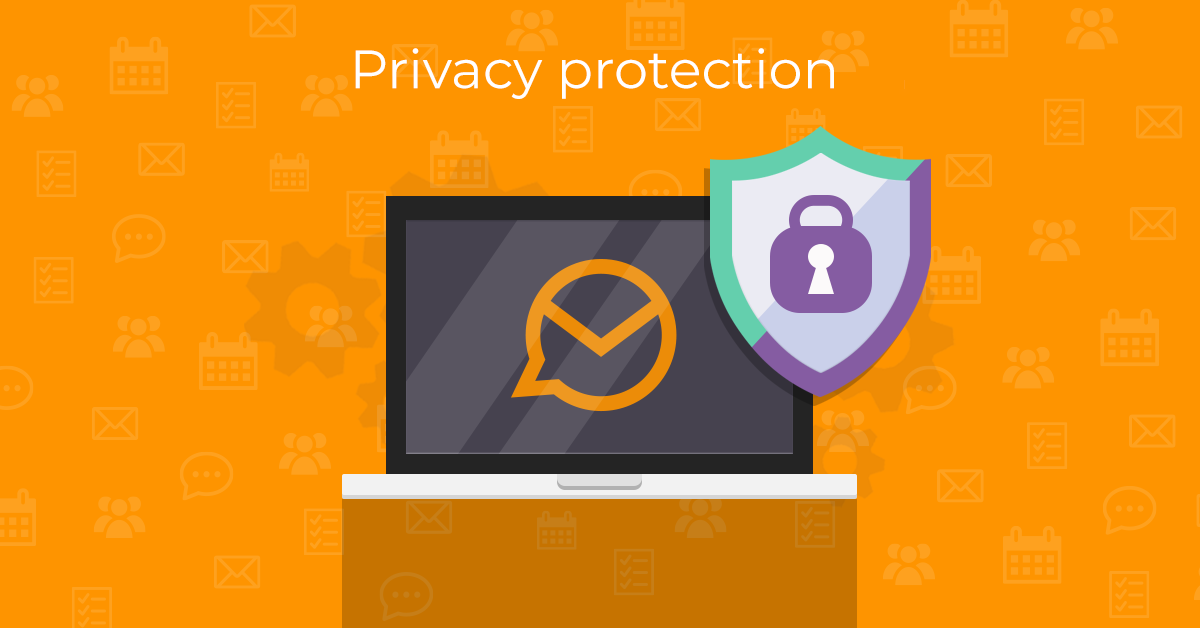The digital age is filled with dangers and with more and more of our lives taking place online, we need to stay protected – and that includes our communication via email. There are ways to protect your emails not just from external threats but even from the provider of your email service.

Who can read your emails?
In an ideal word, no one! But that is not always the case. Even if your mail server provider promises not to read your private messages, they still technically can, since they are the ones making sure the code of your emails is not only sent and received but also stored on their server so you can read your messages from anywhere. And they also need that access to help you troubleshoot any problems, so there is a possibility of this line being crossed.
The email code also does not make its way directly from your mail server to the recipients’ - along the way, it passes through multiple servers that help ensure it arrives at the right place, and even though most communication is encrypted on some level, the threat of someone else intercepting your message is still there.
Similarly, if your device is not password protected in any way, people who have access to your computer (or in case of a theft of your device) would also be able to open and look into your personal correspondence.
How to protect your emails?
A great way to avoid all these dangers is encrypting your emails. Email encryption involves encrypting the content of an email message in order to protect potentially sensitive information from being read by anyone other than intended recipients.
Once a message is encrypted it can only be read if you have the key in your device to decrypt it and the password to use it.
S/MIME encryption
S/MIME (Secure/Multipurpose Internet Mail Extensions) is a standard for encryption and signing of mail data. To be able to use it, you need to get a key from a Certificate authority, so there is a guarantee of the identity connected to a specific certificate. This makes the standard much safer but also a bit more difficult for a general user to get a certificate.
PGP encryption
PGP is acronymous to "Pretty Good Privacy" and was invented already in 1991. Despite being connected mainly to email communication, PGP can be applied to any texts or files.
Creating a PGP certificate is much easier and you can make one online or using eM Client, for example. But it is recommended to double-check the identity of the person who gives you a PGP key to use to encrypt messages for.
More detailed information on this topic can be found in our guide to Email Encryption and Digital Signatures.
eM Keybook
eM Keybook is a public encryption key directory managed by the company eM Client. It’s an online service where you can upload and manage your public keys so anyone can easily send you encrypted messages and you can easily get public keys of the recipients you want to send encrypted messages to.
You can read more about eM Keybook in a dedicated article here.
So that is about email encryption – it is very useful and guarantees that your emails can never be read by anyone but you (and intended recipients) but it also means that all your contacts would need to use email encryption with you. In most everyday situation encryption is mostly needed when you correspond with your bank or any government body and similar situations where sensitive information is shared. Most people don’t stress over it when sending a picture of their cat to their grandma’s email after all.
But don’t fret, there are easier and more accessible ways to keep your data safe.
Key points on keeping your data secure
There are also a number of ways to protect your emails in general. Such as:
- Make sure your email provider/server is up to date with current security trends
- Create secure passwords – that means no number series, your own name or any other easy to guess element. It’s a good idea to mix up some letters, numbers and symbols or use something from your past that no one else knows about
- Keep your account in your computer/phone password protected
- Don’t share your password with anyone – and especially not via any written communication that is NOT encrypted!
- Don’t save your password in any unencrypted files in your device or upload them to external services
- Keep eM Client or any other app you use up to date.
- Download apps or updates from trusted sources only – either an official website or a window that you can be sure is from the application itself
- Research before installing a new app – make sure to check out online reviews
- Think before you click - don’t just click on email links, even if the email seems to be legitimate. Always hover over them and check that the URL matches the context of the email and sender, in eM Client you will see this at the bottom of the message window.
Using these tricks can help you keep yourself secure online in the long run, so try keeping some of these in mind next time you visit a website or read an email from an unknown sender.
New to eM Client?
Try it out! It's free and fabulous.
If you’re ready for more, buy the PRO license and enjoy:
And in the meantime, check out our YouTube channel for how-to videos.